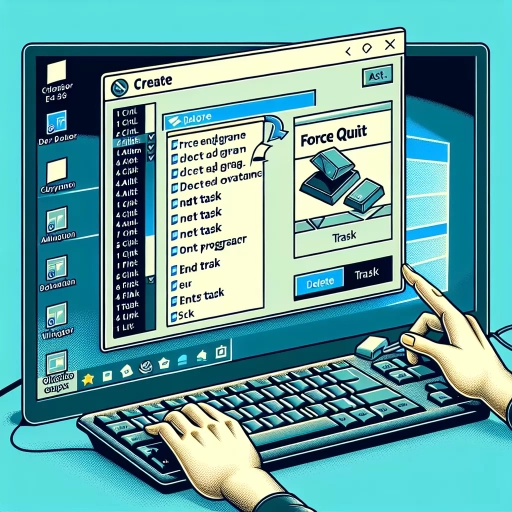How To Force Quit On Windows

Understanding the Need to Force Quit Applications on Windows
Why Force Quitting is Necessary
When an application or process in Windows becomes unresponsive or starts to cause issues with the system's performance, it may be necessary to force quit the application. Force quitting an application essentially terminates its process, freeing up valuable system resources and potentially resolving system issues. However, it's important to note that force quitting is usually a final resort; it's always better to try to close an application normally first if possible. This is because force quitting can sometimes lead to data loss or even system instability if used too frequently or improperly.
Common Causes for Unresponsiveness
Various factors can cause a Windows application to become unresponsive. For instance, running out of system resources such as RAM or CPU power can often lead an application to freeze. Sometimes, software bugs or conflicts may also result in responsiveness issues. Whatever the cause, understanding why an application has become unresponsive can help you determine the best course of action, whether that's force quitting the application or finding a long-term solution to the underlying issue.
Benefits and Risks of Force Quitting
Force quitting an unresponsive application can have immediate benefits such as releasing system resources and improving system performance. However, it also carries risks such as potential data loss, especially if you were working on an unsaved document or project. In extreme cases, it could even cause system instability or corrupt your system files. Therefore, it's crucial only to resort to force quitting when it's clear that an application is completely unresponsive and causing significant system issues.
Methods to Force Quit Applications on Windows
Task Manager Approach
The Task Manager is a built-in tool in Windows that allows you to monitor and control the processes running on your machine. Among other things, you can use it to force quit unresponsive applications. To do this, you simply need to open Task Manager, find the unresponsive application in the Processes or Applications tab, right-click on it and select 'End Task' or 'End Process'. This will forcefully terminate the application.
Keyboard Shortcut Method
Windows offers a keyboard shortcut that can open the Task Manager directly, making it quicker to force quit an unresponsive application. By pressing 'Ctrl + Shift + Esc', you can bring up the Task Manager without having to navigate through menus or screen interfaces. From there, it's just a matter of finding the application you want to force quit and choosing 'End Task' or 'End Process'.
Command Prompt Strategy
For advanced users, the Command Prompt can also be used to force quit applications on Windows. By typing 'taskkill /F /IM [program name]', you can force quit any application using just its name, making this a quick and powerful method for those comfortable with command line interfaces.
Preventing Unresponsive Applications in the Future
Understanding Your System Resources
A well-maintained and adequately equipped Windows machine will often experience fewer instances of unresponsive applications. Understanding your system resources, such as your available RAM and CPU power, can help you avoid overloading your system and causing applications to freeze.
Keeping Your Software Up-to-date
Software updates often include bug fixes and improvements that can prevent applications from becoming unresponsive. Therefore, it's crucial to keep your software up-to-date, including your Windows operating system and all your installed applications.
Getting Help if Needed
Sometimes, despite your best efforts, you may encounter persistent issues with unresponsive applications on your Windows machine. In such cases, it may be beneficial to seek professional help, either from technical support departments, online tech forums or specialized software that can diagnose and fix system problems. Remember, there's no shame in asking for help when you need it.